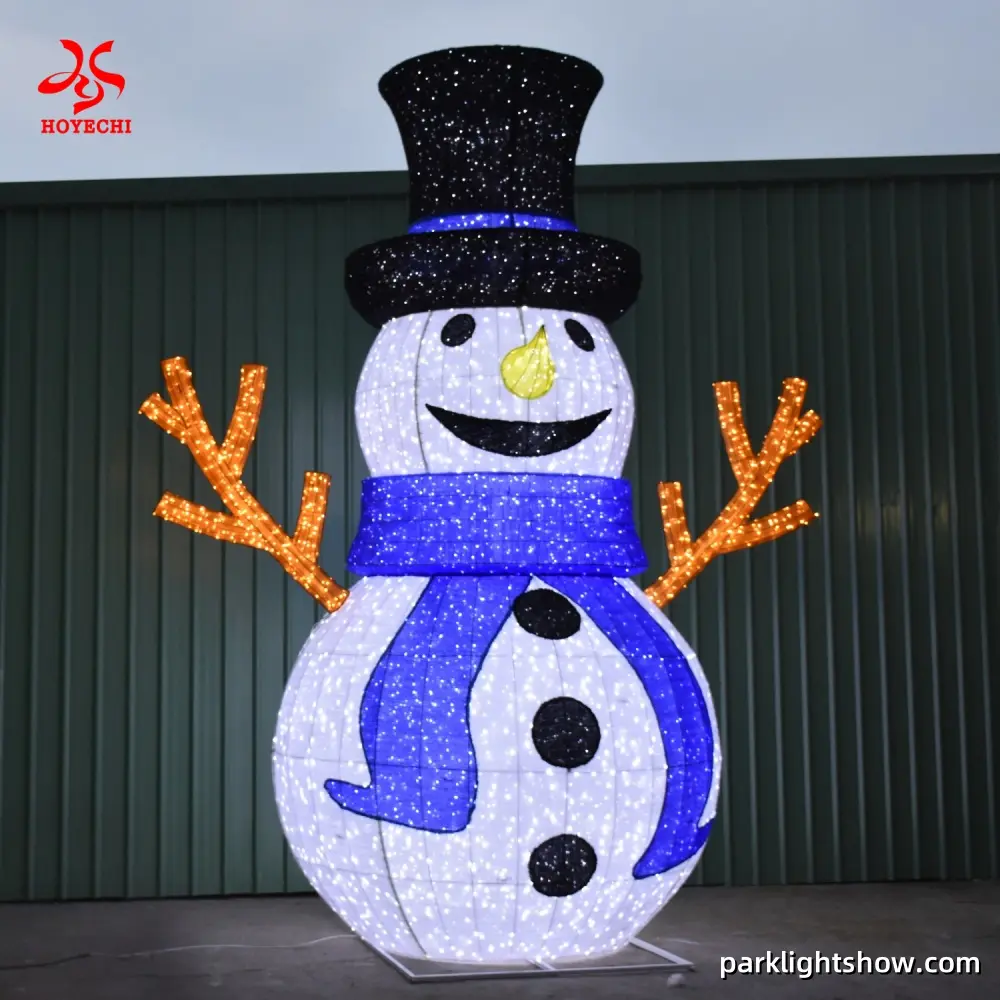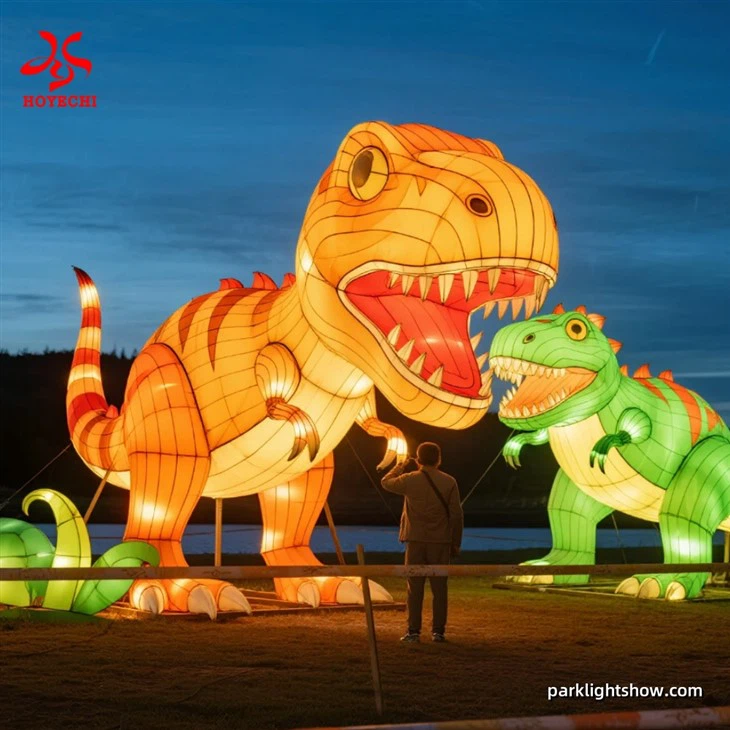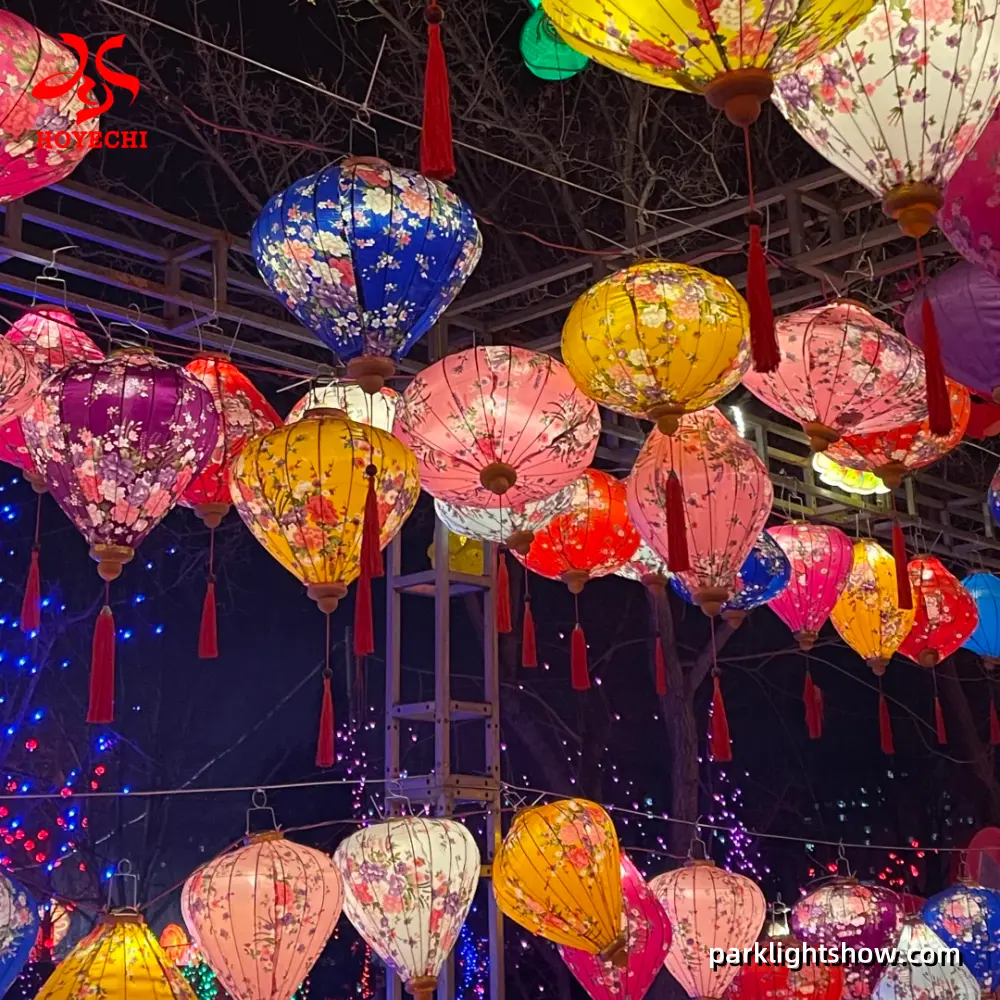The History of Flower Lanterns
Flower lanterns are one of the most visually striking elements of Chinese festival folk art. They serve practical lighting needs while carrying layers of ritual, blessing, entertainment, and aesthetics. From simple hand-held lanterns to today’s large themed light installations, the development of flower lanterns reflects changes in technology, religion, social life, and taste. This version of the article integrates three typical lantern product examples to make the contrast between tradition and modern practice easier to see.
Origins: From “lighting” to “ceremony”
Early lamps were primarily functional, but lighting as festival decoration and religious ritual has very early roots. Records of the Lantern Festival (the 15th day of the first lunar month) appear more frequently from the Han dynasty onward. Influenced by Buddhist liturgies and imperial promotion, lantern-viewing during Yuanxiao became an established folk practice. Popular beliefs linked lighting with prayer, averting disaster, and celebration, so viewing lanterns combined public ritual and neighborhood festivity.
Flourishing and evolution: Tang, Song and beyond
During the Tang dynasty, urban culture flourished and Lantern Festival celebrations reached large scale; by the Song dynasty, lamp-viewing was widely popular among commoners, with many lantern types and more refined craftsmanship emerging. Over time, as handicraft traditions and urban popular culture developed, lanterns evolved from mere utilitarian objects to performative, decorative artworks. Forms proliferated — rotating “walking” lamps, palace lanterns, beast-faced lamps, handheld lanterns — often alongside dragon-and-lion dances, riddles, and other festival entertainments.
Regional styles and exemplars: Zigong, Yuyuan and local variants
Different regions developed distinct lantern traditions. Sichuan’s Zigong is famous for its large-scale colored lanterns (Zigong Lantern Festival), known for grand scale, intricate craftsmanship, and integrated sound-light-mechanical effects. Jiangnan areas (e.g., Shanghai’s Yuyuan Garden) emphasize delicate lines and detail, often combining lanterns with folk performances. Northern regions retain many handheld and hanging lantern customs. Traditional and local craftsmanship present different aesthetics suited to their contexts.
Product example — Traditional silk/guaze palace lanterns
In contrast to large engineered installations, traditional palace lanterns or silk-covered lanterns preserve delicate hand-crafted aesthetics: bamboo or thin metal frames covered with printed silk or xuan paper, often finished with tassels, wooden bases, and hand-painted floral or bird motifs. These lanterns have full, gentle forms and soft color palettes, ideal for hanging in temples, gardens, or historic streets to create a classical, elegant festival atmosphere.
Materials and techniques: frame, covering and light source changes
Traditional lanterns commonly used bamboo, rattan, or thin wood frames, covered with xuan paper, silk, or other textiles, and lit with oil lamps or candles. In modern times, the introduction of metal structures, electric bulbs, LED strips, and control systems greatly expanded expressive possibilities and safety: dynamic motion mechanisms, large-scale installations, and permanent city displays became feasible.
Product example — Modern seasonal character LED installation
Modern lanterns continue traditional motifs but also introduce seasonal themes and commercial displays. For example, large snowman LED sculptures typically use welded metal frames with a weather-resistant mesh or with LED strings attached directly to the frame. Hundreds to thousands of LEDs form a uniformly glowing three-dimensional character. These products often include waterproof connectors, detachable bases, and junction boxes for outdoor, long-term display — common in city plazas, shopping mall Christmas displays, or festival shows.

Social and cultural meaning: blessing, bonding and public ritual
Lanterns carry not only aesthetic value but also social functions: prayers for good harvests, warding off evil, neighborhood gatherings, and socializing among friends and family. Night markets, lantern riddles, and dragon-lion dances often coincide with lantern-viewing to create a comprehensive festival experience. Folk stories and documents frequently connect lantern-viewing with national peace and popular well-being, reinforcing its public ceremonial meaning.
Modern times: tourism, creativity, and themed festivals
Since the 20th century — especially in recent decades — lanterns have transitioned from folk ritual to components of city night-life and festival economies. Large lantern festivals (e.g., Zigong and other local shows) have become cultural performances and tourist attractions, drawing families and photographers. Designers and craftsmen combine modern sculpture, lighting design, and audiovisual technology with traditional techniques to create interactive, high-impact works.
Product example — Large themed installation

Contemporary lantern festivals trend toward theme-based storytelling and large-scale installations such as dinosaur, ocean, or historical-figure displays. These large themed pieces usually employ welded steel frames covered with high-strength translucent fabric or fiberglass cloth, internally fitted with color-changing LEDs and small motion mechanisms to present realistic three-dimensional forms at night and to be appreciated from a distance. Dinosaur-themed installations appeal to families and provide great photo opportunities, helping festivals lengthen visitor stays and increase “photo spot” popularity.
Preservation and transmission: challenges and opportunities
The transmission of traditional craftsmanship faces challenges such as skill gaps, material substitution, and commercialization. Nevertheless, initiatives — intangible cultural heritage listings, local lantern festivals, craft workshops, and educational programs — help balance protection and innovation. Younger designers are reintroducing traditional elements into contemporary design, revitalizing lantern arts and broadening their audience.
Seeing tradition through light and innovation
The history of flower lanterns is a history of materials and technologies, and also a mirror of changing religious practices, festival culture, and urban life. Watching a lantern festival is not only about color and light, but also about seeing how history is continually rewritten — through local memory and modern creativity. If you’re organizing an exhibition or preparing a publication, pairing the three images referenced above — traditional silk lanterns, a modern snowman LED installation, and large themed dinosaur lanterns — will clearly illustrate the development arc from “tradition → transformation → innovation.”
Post time: Sep-15-2025





